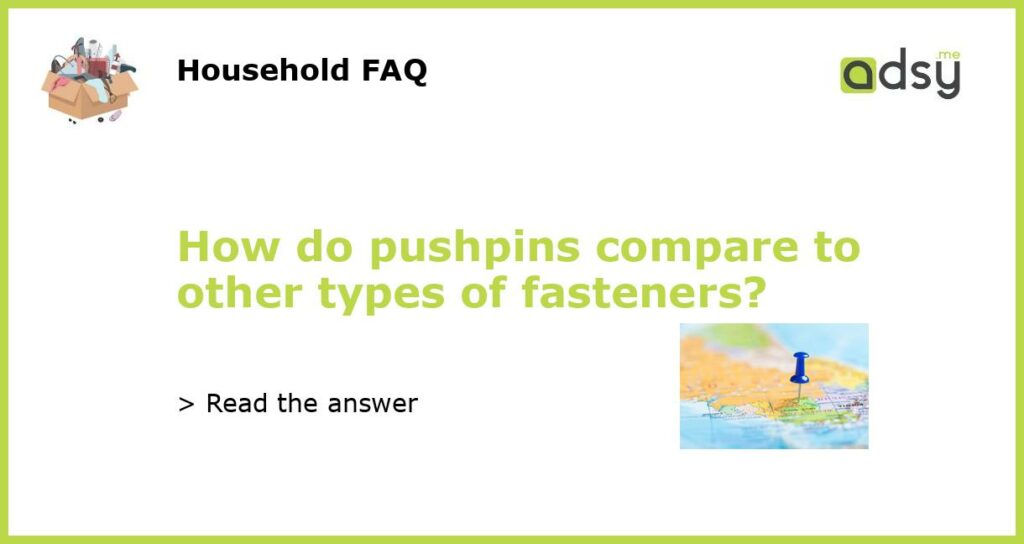Pushpins vs. Other Fasteners: Understanding the Differences
When it comes to securing items, there are a variety of fasteners to choose from, including staples, thumbtacks, paper clips, and pushpins. While each option has its own unique characteristics, pushpins often offer some distinct advantages compared to other fasteners.
Benefits of Pushpins
Pushpins are a popular choice for a variety of reasons, such as:
- Easy to use: Pushpins can be applied to just about any surface with a light touch, making them quick and easy to use.
- No damage: Unlike staple guns or nails, pushpins don’t leave behind unsightly holes or damage to walls, furniture, or other surfaces.
- Removable: Need to move or reposition your poster or note? Simply lift the pushpin out of the wall and move it to a new spot without causing any damage.
- Customizable: Pushpins come in a variety of colors and styles, allowing you to choose the perfect option to match your décor or mood.
Other Fasteners
While pushpins offer a lot of benefits, other fasteners may be better suited for certain tasks. Here are some other options to consider:
- Staples: Staples are ideal for securing thick stacks of paper together or for attaching items to a bulletin board. However, they can be difficult to remove and may cause damage to delicate surfaces.
- Thumbtacks: Thumbtacks are similar to pushpins but have a flat head instead of a round one. While they’re easy to use, they can also cause damage when removed.
- Paper clips: Paper clips are great for temporarily securing documents together, but they can easily fall off if not used correctly.
Choosing the Right Fastener
Ultimately, the right fastener for your needs will depend on a number of factors, such as:
- The type of surface you’re attaching the item to
- The weight of the item
- How long you need the item to be secured
- Whether or not you need to reposition the item later
Overall, pushpins are a versatile fastener that are well-suited to many tasks. However, it’s always a good idea to consider other options depending on your specific needs and the requirements of the surfaces you’re working with.






